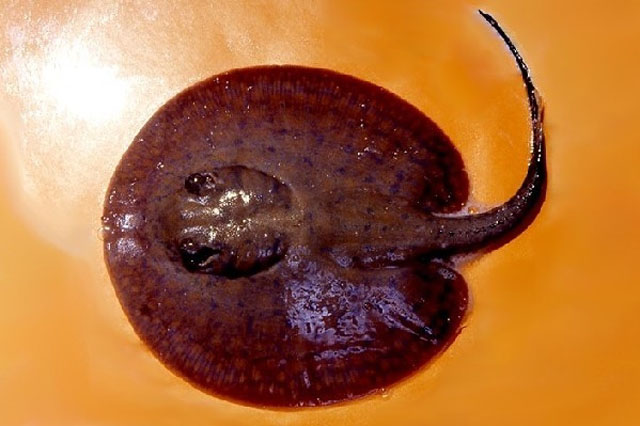| Potamotrygonidae (River stingrays), subfamily: Potamotrygoninae |
| 40 cm WD (male/unsexed); max.weight: 15 kg |
|
benthopelagic; freshwater; dH range: 10, potamodromous |
| South America: Paraná-Paraguay River basin. |
|
|
| Occurs in marshy zones where it is frequently found partially hidden in the sandy bottom. This behavior, associated with its perfect immobility and its capacity to undergo homochromy, makes it practically undetectable to the eye. Like all species of this family, P. hystrix has a tail which is equipped with one or more spines which fall spontaneously and are replaced 2 or 3 times a year. At a length of 4 to 6 cm, the spine is a barbed, flattened skeletal formation inserted dorsally in the middle portion of the tail. Its structure is similar to that of a tooth and appears as an ivory cone covered with enamel. The spine is coated with an extremely toxic mucus produced by the cells of the skin and inflicts very painful wounds (Ref. 27188). |
|
Data deficient (DD); Date assessed: 24 June 2003 Ref. (130435)
|
| harmless |
Source and more info: www.fishbase.org. For personal, classroom, and other internal use only. Not for publication.
